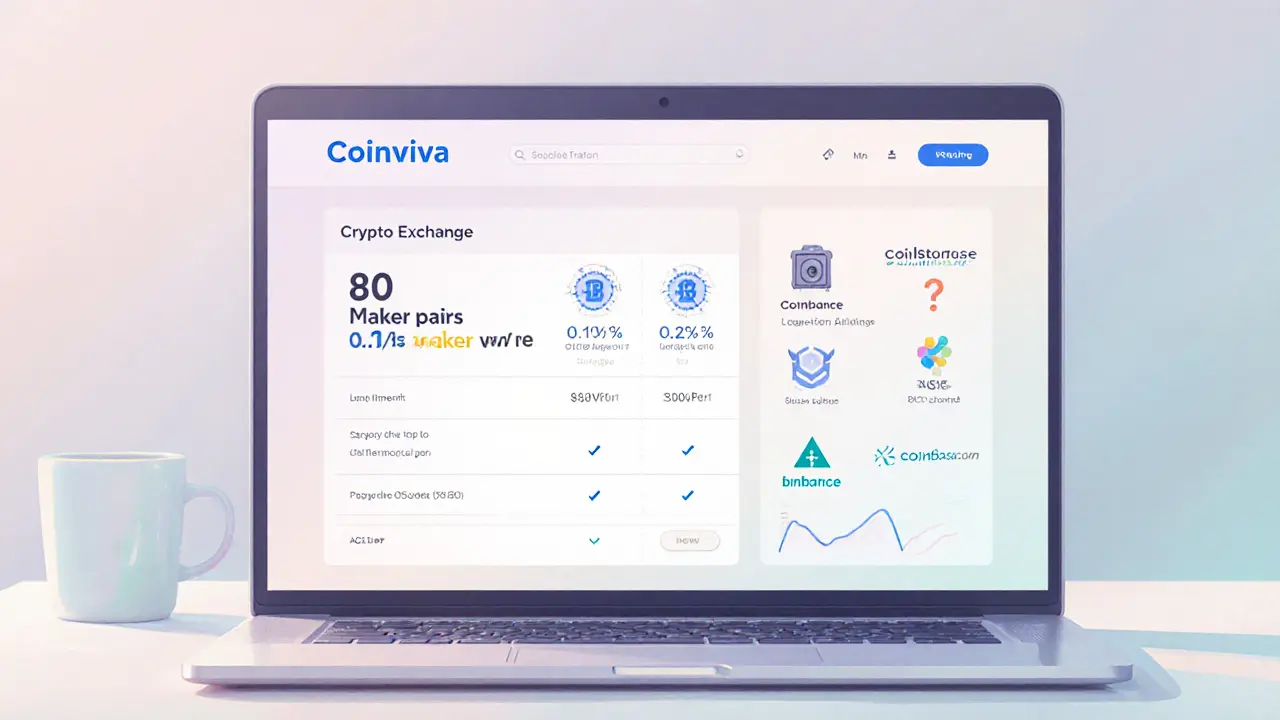Coinviva Fees – Understand the Costs of Trading on Coinviva
When you hear Coinviva, a crypto exchange that lets users buy, sell, and trade digital assets, the first thing most people wonder is how much it will cost them. That question boils down to exchange fees, the charges an exchange applies to each transaction. Within that umbrella you’ll run into trading fees, the percentage taken when you open or close a position, withdrawal fees, the flat fee paid to move crypto off the platform, and the whole maker‑taker model, a pricing structure that rewards liquidity providers (makers) with lower rates than takers who consume that liquidity. Understanding how these pieces fit together is the first step to keeping your costs low and your strategy sharp.
Key Components of Coinviva's Fee Structure
Coinviva uses a tiered fee schedule that changes based on your 30‑day trading volume. New users start at a flat 0.25% taker fee and a 0.15% maker fee, but as you climb the volume ladder those rates can drop to as low as 0.075% for makers and 0.18% for takers. The maker‑taker split matters because it directly influences how you place orders: limit orders that sit on the book earn you the maker rate, while market orders that hit instantly attract the higher taker rate. Withdrawal fees are separate and usually a flat amount per blockchain – for example, moving Bitcoin out of Coinviva costs about 0.0005 BTC, whereas an ERC‑20 token withdrawal might be a $5 flat fee. Deposit fees are generally zero, which is common across most exchanges, but always double‑check for any network surcharge that the blockchain itself might impose.
How do these numbers compare to other platforms? Most major exchanges charge between 0.10% and 0.30% per trade, so Coinviva sits right in the middle. What sets it apart is the clear maker‑taker incentive: active market makers can shave a few basis points off every trade, a benefit that compounds over high‑frequency strategies. Hidden costs are rare on Coinviva, but you should watch out for “conversion fees” if you move between different blockchain networks inside the platform – those can add a small percentage on top of the base withdrawal amount. For retail traders who move modest sums, the flat withdrawal fees matter more; for institutional players, the volume‑based discounts on trading fees become the main cost driver.
Below you’ll find a curated set of articles that break down each of these fee types in detail, compare Coinviva to other exchanges, and give you actionable tips on minimizing costs. Whether you’re a beginner curious about the basics or a seasoned trader fine‑tuning a high‑frequency bot, the posts ahead cover everything you need to make informed decisions about Coinviva fees and keep more of your crypto where it belongs – in your wallet.

An in‑depth Coinviva crypto exchange review covering fees, security, licensing, user experience, and how it measures up against Binance, Coinbase and Crypto.com.
Jonathan Jennings Feb 16, 2025




